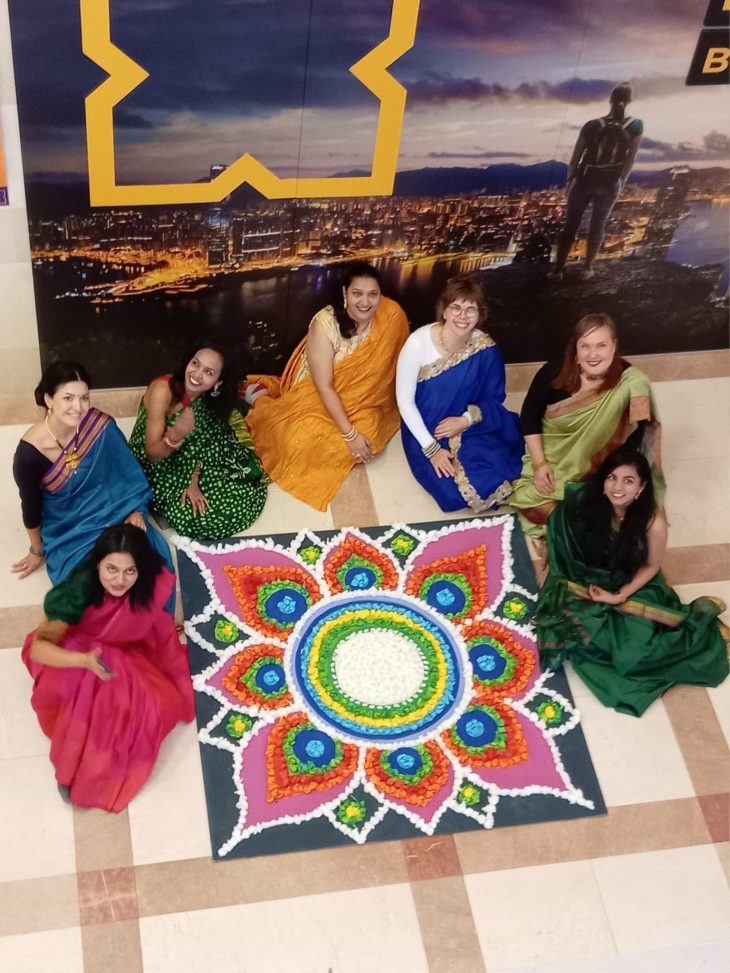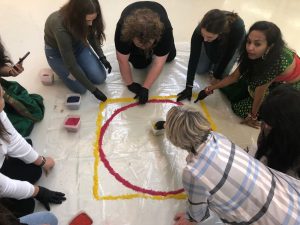
Rangoli – Colours of India
Recently we experienced a cultural event that left an unfading mark on our memory, captivating us with its colors, diversity, and rich heritage. As a part of India Day, the Rangoli workshop was conducted in the main building of XAMK at Kouvola.

What comes to your mind when you think about Rangoli? This traditional art, originating from India, isn’t just a decorative gesture. it’s a symbol of welcome, prosperity, and tradition. Its roots deeply embedded in Indian culture, Rangoli is a vibrant and intricate design crafted on the floor typically at the entrance of homes or during festive celebrations. Dating back centuries, this art form embodies a profound cultural essence and remains an important part of Indian heritage.

The word “Rangoli” finds its origins in the Sanskrit words “rang” (color) and “avalli” (row of colors). The art form was initially known as “Aripan” or “Alpana” in different regions of India, each carrying its distinct style and significance. Historically, Rangoli was created using natural materials like rice flour, colored sand, flower petals, and spices, skillfully arranged on the floor to form intricate designs. These intricate patterns are created by hand and these artworks reflect the artist’s imagination and skill. Each design is unique and captivating in its own right. The process of creating Rangoli encourages patience, precision, and a deep appreciation for aesthetics, making it a revered art form passed down through generations.
Throughout Indian history, Rangoli has been a form of artistic expression and communal bonding. Women have played a central role in preserving and passing down this art form through generations creating a sense of unity within families and communities. It is deeply intertwined with spirituality, drawing inspiration from religious symbols, deities, and sacred geometry. The intricate patterns often symbolize harmony, unity, and the cyclic nature of life, incorporating designs inspired by mandalas and other spiritual motifs.

Rangoli stands as more than just a form of decoration; it embodies a cultural narrative, reflecting India’s rich heritage and spirituality. It also symbolizes the enduring beauty and depth of Indian tradition and artistry.
In essence, cultural events such as these serve as reminders of the beauty in diversity, the richness of our collective heritage, and the significance of coming together to celebrate our differences. They leave an enduring impact, prompting us students to cherish and respect the multitude of cultures that paint the canvas of our world.
- Summer Holiday in Stockholm, Sweden - 13th September 2024
- The end of an academic year – Rest, Relax and Reload! - 19th April 2024
- Our Experience at Reima Oy – Student Recap - 12th April 2024
